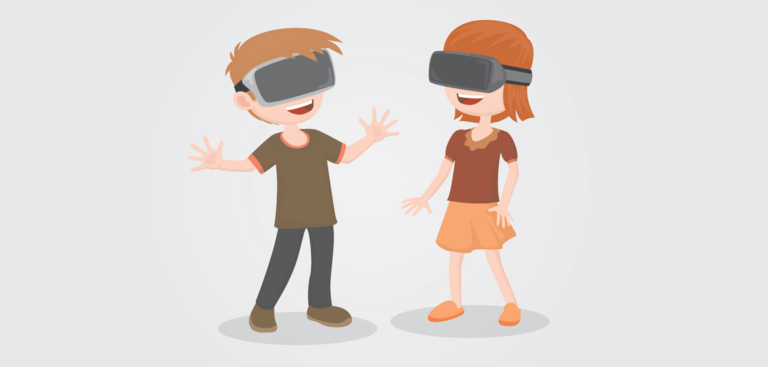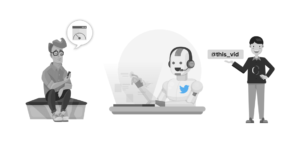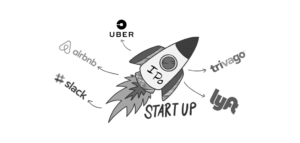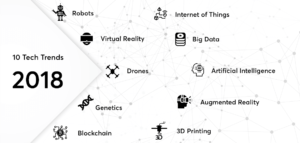Everything You Need To Know About Virtual Reality In Real World

If you have read books or watched movies crafted using the Virtual Reality concept, you would know that the real world still lags far behind what has been conceptualized. Virtual Reality in the real world is slowly occupying large spaces. As we discussed in the last article, how Virtual Reality is upping the viewers experience during the Fifa 2018, there are instances where VR technology is slowly becoming important and capturing the industry’s eyes. Some of the top industries such as education and travel are slowly prepping for the acceptance of VR apps, and are moving beyond the current technologies.
Analysts forecast the Global Virtual Reality Market in Education Sector to Grow at a CAGR Of 59.14% During the Period 2018-2022
This data has been identified for the education sector alone. The other sectors are also equally enthusiastic about offering immersive experience to their potential and current users for acquisition and retention.
Despite this level of acceptance, a recent news published in Techcrunch mentions the unavailability of any app worth talking about. They claim that despite the crores being invested in improving and enhancing the technology, and also several companies working towards making the technology affordable, there are no real apps in the world that make sure the technology can be exploited completely. They don’t say there are no apps; however, they claim the apps are yet to reach the mind boggling numbers.
Here, we will talk about Virtual Reality technology, and how you can develop apps using this technology to further your business.
What is VR?
Virtual Reality or VR has been made famous by the several applications that have been released to enhance game watching experiences. Even the masses are aware of the technology, as a few hospitality and travel companies have incorporated this technology. So, what is it? How different is it from Augmented Reality?
Virtual Reality is basically a computer based simulation of a real-life environment with auditory, visual, haptic and other sensory feedback included. The VR in present times requires you to strap the VR devices around your eyes in order to simulate the environment. The image is captured and rendered into stereoscopic 3D, which when viewed through these devices makes it feel like real. There are other physical aids within the devices and some aids that the device integrates with to make the virtual environment feel real.
Currently, the 3D environment that we are capturing is not exactly the simulation environment the movies and books are talking about. The advanced levels that have been captured to perfection in movies like Minority Report will take a few years; however, we have successfully crossed the first level with sensory devices and perfect 3D level integration with cameras.
Now that you know what Virtual Reality is, let’s move on to understand what is the difference between Virtual Reality and Augmented Reality.
AR vs VR
Both the technologies were inspired with the idea of altering reality. However, the methodology and the whole perspective of simulation differs in both cases. For Virtual Reality, it is important to transpose the user into another world. With the VR headset on, you won’t realize what is happening in the actual world. You will only be aware of the simulated environment.
Augmented Reality, as the name suggests, is an augmentation of your real environment. You are still very much aware of the current environment, while you are in the augmented world of reality. It will add to the real world. The game of Pokemon Go created an alternate real world for the users, without disrupting the real world. Google glasses are an excellent example of how Augmented Reality works. The best example is scuba diving vs watching an aquarium. Scuba diving is your VR equivalent while, watching the fishes inside the aquarium is your AR.
Components of VR Device:
Ever thought of how the VR device makes it possible for you to simulate a real environment? Here are the components of a VR device and the controls they offer to the makers of the VR apps.
- Content Feeds: This is the hardware aspect for the VR device i.e. the data is supplied by the computer, console or phone it is connected to. The single game or app is transformed into the VR experience the user is looking for through the content feed.
- Controls: The headset allows the user to interact with the virtually real environment using basic controls. These are the basic headsets. However, there are gaming consoles that come with real world like devices such as guns and swords, which help in interacting with the hardware or the content of the environment
- Displays: The VR image that you received in the VR box as a result of its connection with the smartphone or computer. There are a lot of headsets such as Oculus Rift that create the simulated environment; however, the recently developed cheaper headsets use the 4k screen of the smartphone as their display.
- Lenses: The lenses are the actual trick for the VR headset. It is the lens that manages to create a 3D visual of the actual image and make it look real in the virtual environment. The advance versions of the headsets come with lens adjustments, which ensures reduced eye strain and real environments
- Frame Rate: The immersive experience is highly dependent on the frame rate. For highly immersive experiences, it is important for the frame rate to be somewhere between 60FPS and 120 FPS. Slower than that can lead to less immersive experiences and strain on your eyes.
- Tracking Sensors: There are tracking sensors in the advanced headsets that make sure to understand even the slightest movement made by your body. These headsets come with movement sensors.
There is the audio aspect within these devices, which control the sounds within the virtual environment and make sure you are not disturbed by the sounds of the real environment.
Things to Consider:
When you are opting for virtual reality app development for your business, there are a few things that you might want to consider.
- The immersiveness in experience: What type of immersion do you want to offer as part of your VR app? There is the semi immersive app variety wherein you have certain real-world elements occupying the space with your virtual elements to create a virtual experience for you. In this, you are still able to sense the real world. The fully immersive is where the real world is completely lost, when the user enters the virtual environment. They are completely immersed within the environment. When planning your VR app, you may want to consider the kind of immersive experience you plan to give to your users.
- UI Considerations: It is important to know that the users won’t be interacting with the UI in the VR environment. You may want to commit to UI that is employed for the VR users. It should be gestures and not button based interactivity that you need to employ inside the UI. Again make sure the users interact with the UI only when the need occurs, else it may not be able to connect with the VR experience you are planning on offering. The UI needs to planned according to the experience and other constraints that you have panned out for the VR app.
- Tracking made easy: The Virtual Reality apps need to adjust themselves based on the slight changes in movement made by the user. The gyroscopes and accelerometers are integrated to mark these changes. You may want to design your app, taking into consideration these needs and elements of tracking and efficiency.
- Seamless operation: Finally, it is important to make sure the operation of the app is smooth and seamless. Before releasing the app, it is important to check for the possible bugs. It is important that you ensure the stable performance of the app. The ultimate aim is to create a seamless experience environment for the user.
Conclusion:
2018 is the year that VR will take a step further and move towards reality. It is important that you consider all aspects of user experience needs before compiling your VR app. You need to make sure the app offers ultimate immersive experience, and merges the boundary of real and virtual.
Coruscate has experience of delivering VR apps to various industries. We have even delivered a tool ZepVR, which helps industries develop instant VR apps to meet their immediate needs. If you want to hire us for mobile VR app development or, want us to validate your VR app idea, connect with us via email or phone.








